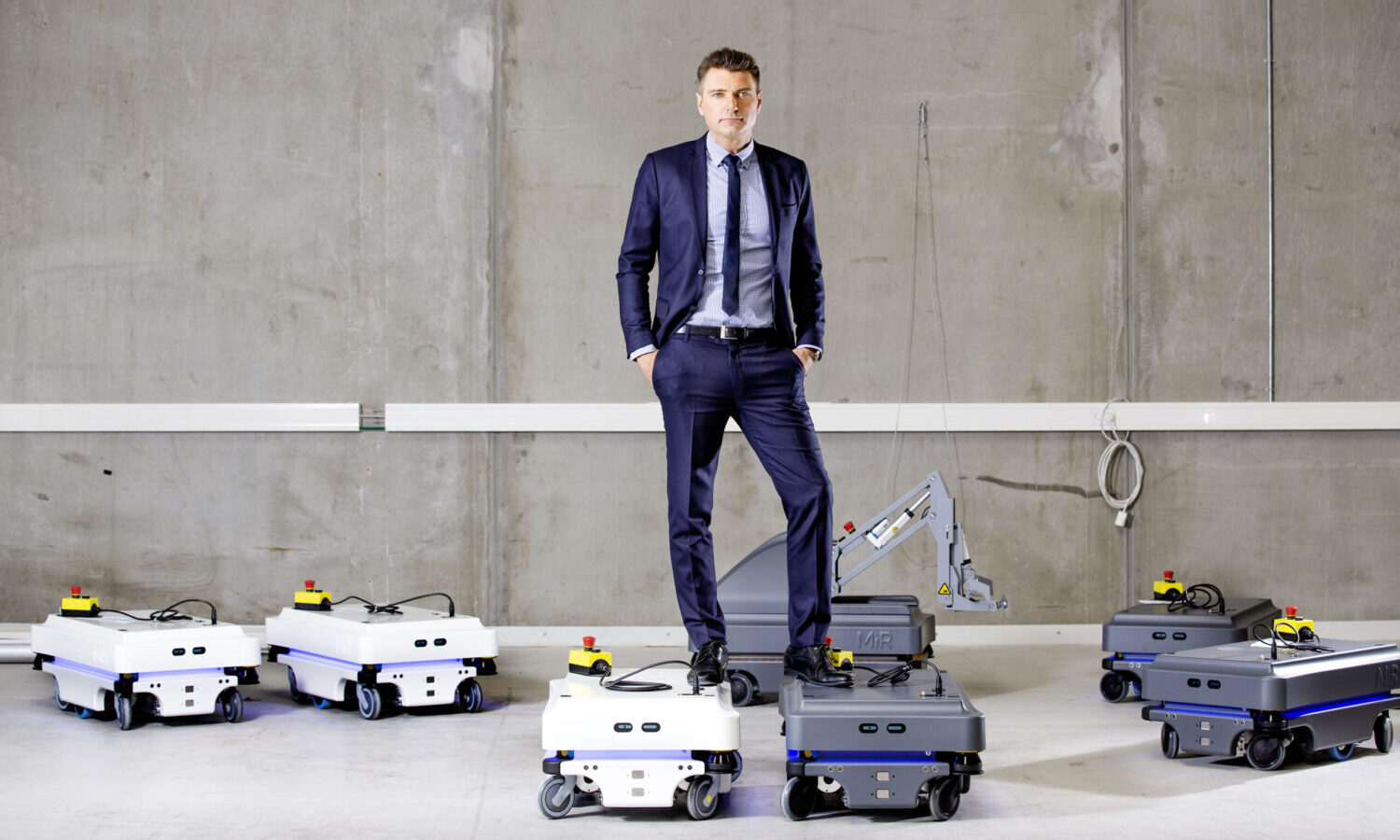Odense Robotics is today considered the most developed robotics cluster in the world. And while the seeds of success are complex, one of the key ingredients has been a particularly Danish custom, according to one of the protagonists of the Funen fairy tale.
It is a story that has been told many times. Both at home and abroad. For although there are now 14 national business clusters in Denmark (recently reduced from around 40) specialising in everything from offshore industry to computer games or welfare, there is still no fixed recipe for the perfect ecosystem.
That is why people in Denmark and the rest of the world often look towards Odense. Here, startups have grown into billion-dollar businesses over the past decade and today form a vibrant ecosystem with one common denominator: robots.
But how is it that Odense in particular has managed to put itself not just on the Danish map, but on the world map when it comes to developing and exporting advanced robotics technology?

“There has been a willingness from the larger companies to hand over knowledge. Danish trust has been crucial here; the belief that one’s technology will not necessarily be stolen just because we share knowledge. And they probably wouldn’t have acted in the same way towards a Chinese robot manufacturer, ” says Thomas Visti, who has extensive international experience from Denmark’s biggest robot successes Universal Robots (UR) and Mobile Industrial Robots (MiR) as co-owner and CCO respectively, says.
“Similarly, there has been a common understanding that talent was not fished from other companies in the cluster. And the cluster has been lucky – at least initially – that the majority of companies were not 1:1 competitors. Today, there are several that are in the same specific field. Still, this hasn’t dampened the desire to share experiences, because most people understand that it’s easy to improve together without handing over critical patents,” he says.
An old shipyard
The history of robots in Odense goes back to Lindøværftet, a proud old shipyard that built ships for the Maersk Group’s shipping business for almost a century. Thirty years ago, the yard began developing and investing in welding robots that could streamline production of its huge ships.
In 1997, Mærsk donated DKK 100 million to the University of Southern Denmark as part of its robot development, and this was the start of the Mærsk McKinney Møller Institute. An institute that laid the foundations for Danish research in robotics, attracted experts in the field to Funen and, in cooperation with industry, created the know-how that is still firmly rooted in the area.
Universal Robotics (UR) really drew attention to the Funen robotics scene when the company was sold for a staggering DKK 1.9 billion in mid-2015. Three years later, it was Mobile Industrial Robots’ (MIR) turn, this time for DKK 2.3 billion.

“The large sales have been decisive and have meant that large amounts of capital have been reinvested in the ecosystem and both skills and talent have remained in the area. I’m a good example of that myself,” says Thomas Visti, who played a leading role in both UR and MIR and today supports and co-creates new businesses himself through the company Visti Unlimited.
But the company is far from alone in having added capital to the robotics cluster ecosystem, figures from Invest in Odense show. Since 2015, more than €900 million has been invested in Odense Robotics companies and today the cluster is considered the largest and most advanced in the world. It is estimated that there are around 300 robotics and drone companies in Denmark due in part to the development.
Robots look set to get an even bigger star in the future. Today, Odense Robotics has been made a national cluster by the Danish government and Denmark is home to over 400 companies in total, all working in the field of automation, robots and drones.
And the future? It looks bright.
“Successes have bred more optimism too. If you talk to a robotics company today, it’s the global approach that prevails. It wasn’t like that ten years ago. In the future, though, I think we’re going to see the big companies get bigger. There you have to recognise that with Universal Robots and MiR you’ve got someone who disrupted the market in their time. Instead, we’ll probably see a few big ones and then a lot of subcontractors flourish because of the size of the giants,” Thomas Visti says.











 Kære læser, du er meget velkommen til at dele vores artikler på sociale medier, linke eller referere til artikler eller content på TechSavvy.media. Men ønsker du helt eller delvist at kopiere indhold fra sitet må det kun ske efter aftale med vores redaktion på editorial@techsavvy.media.
Kære læser, du er meget velkommen til at dele vores artikler på sociale medier, linke eller referere til artikler eller content på TechSavvy.media. Men ønsker du helt eller delvist at kopiere indhold fra sitet må det kun ske efter aftale med vores redaktion på editorial@techsavvy.media.
 Kære læser, du er meget velkommen til at dele vores artikler på sociale medier, linke eller referere til artikler eller content på TechSavvy.media. Men ønsker du helt eller delvist at kopiere indhold fra sitet må det kun ske efter aftale med vores redaktion på editorial@techsavvy.media.
Kære læser, du er meget velkommen til at dele vores artikler på sociale medier, linke eller referere til artikler eller content på TechSavvy.media. Men ønsker du helt eller delvist at kopiere indhold fra sitet må det kun ske efter aftale med vores redaktion på editorial@techsavvy.media.